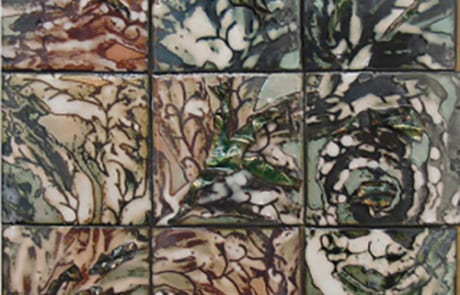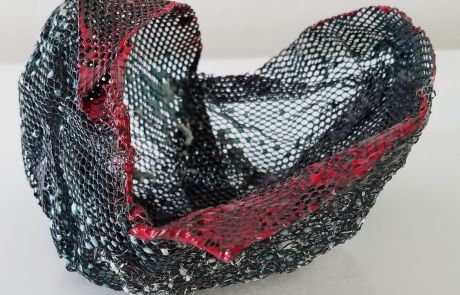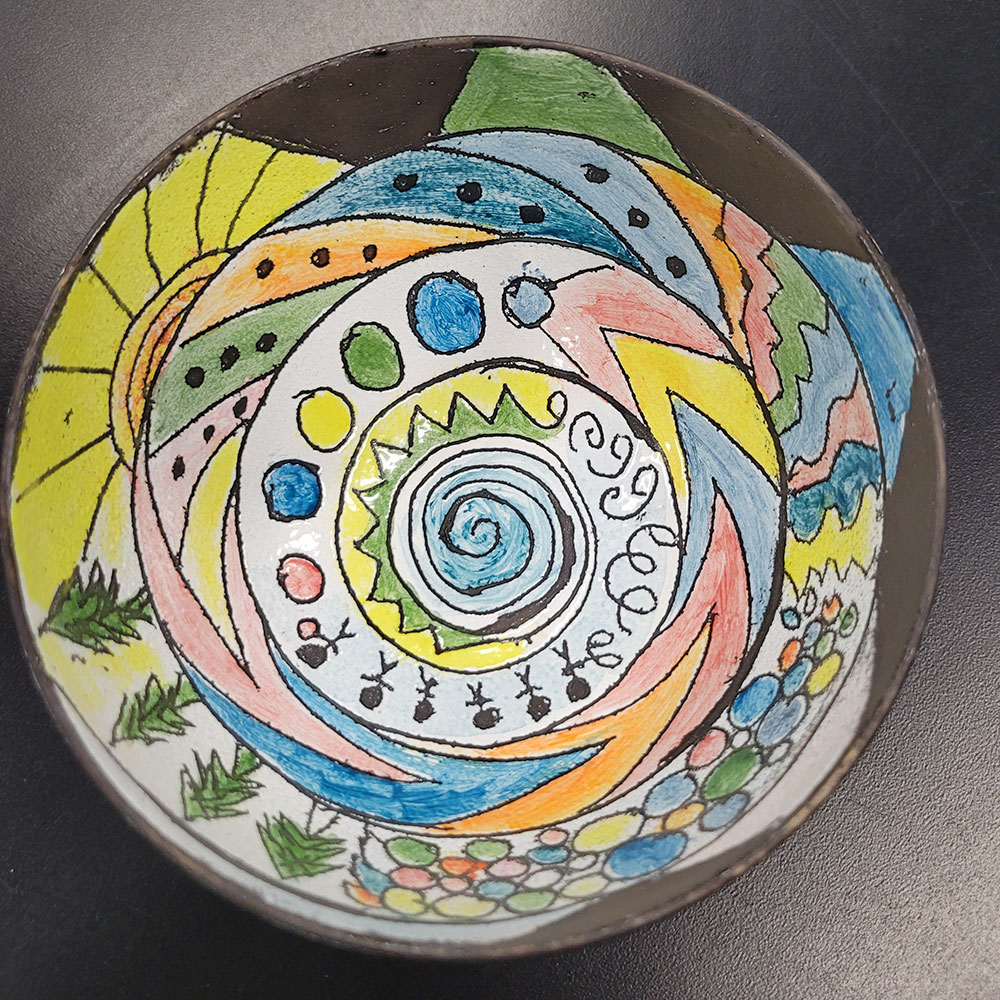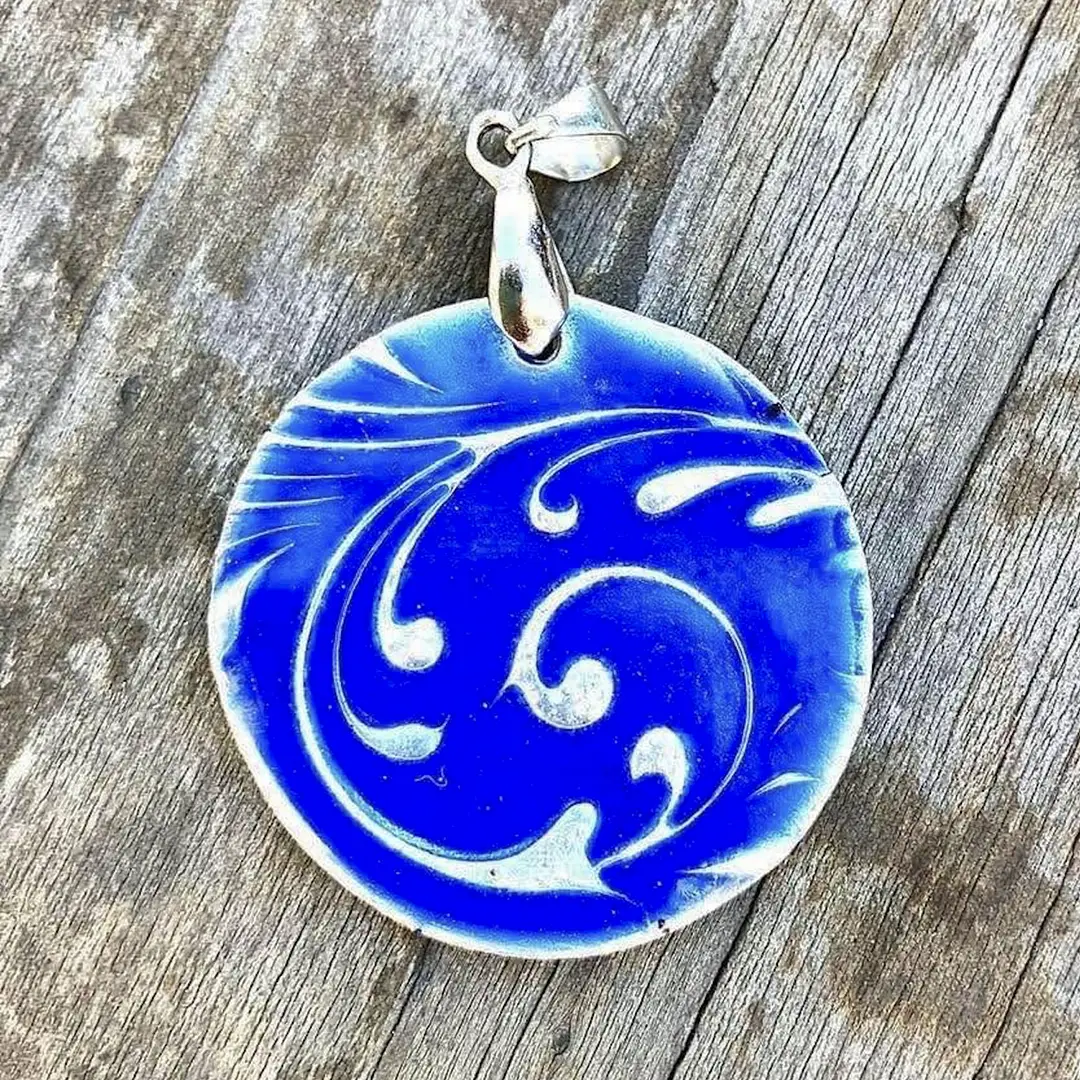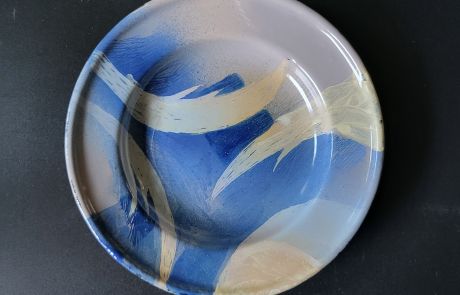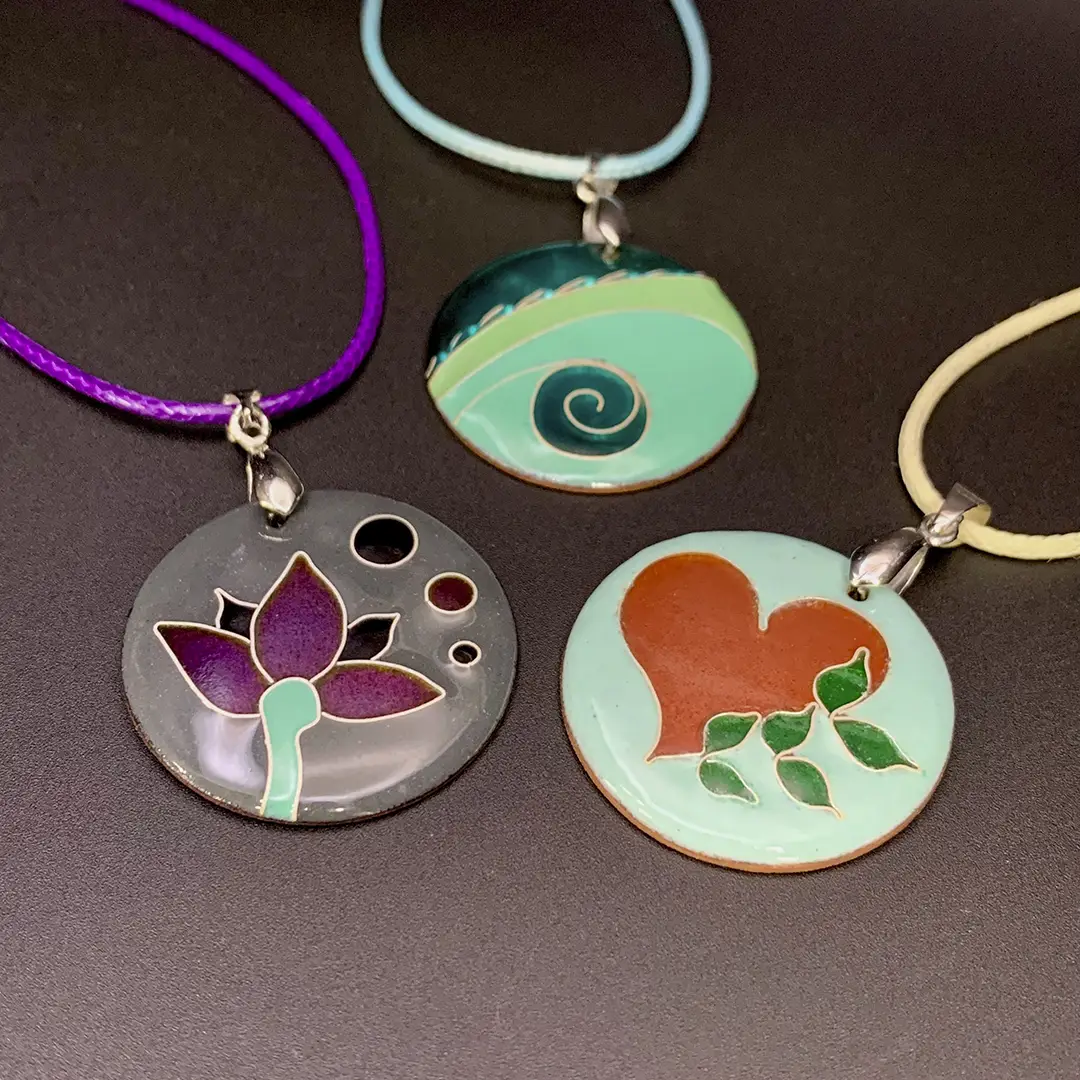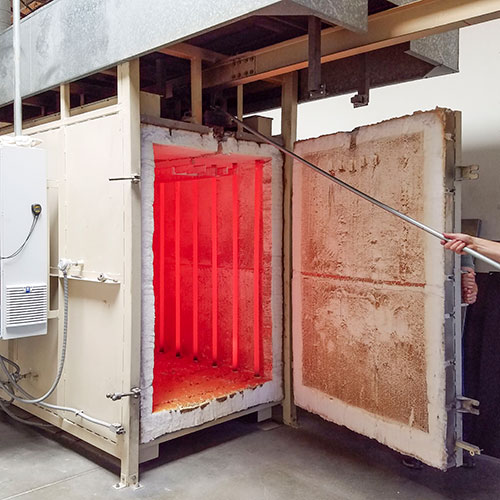EnamelingGlass
Guide to Vitreous Enameling
By Kristin Arzt
Guide To Vitreous Enameling
What is vitreous enamel?
Vitreous enameling is the process of fusing glass to metal at high heat. In American English, “enamel” is sometimes referred to as the material on our teeth or glossy paint. The word “vitreous” is used to distinguish it from look-alike substances such as epoxy resin, which is sometimes referred to as “cold” enamel. The element of heat in the vitreous enameling process is a key distinguishing factor from paint or resin.
Various enamels have been formulated to fuse to a variety of metals, but the most commonly used enamels are known as Jewelry enamels. These can fuse to copper, silver, and gold. Industrial enamels, which are also known as porcelain enamels because of how they are made, are formulated to fuse to various ferrous metals such as steel and cast iron.
How enamels are made
To make vitreous enamels, the raw materials of silica sand, feldspar, borax, soda ash, and sodium fluoride are placed in a crucible. They are then smelted in a furnace between 1200 and 1350 degrees Celsius until all of the raw materials have liquified and mixed together. Once smelted, the mixture is poured onto a steel slab to cool or quenched in cool water. Once it is cold, it is ground into powder using a ball mill. During the smelting process, other non-organic additives can be incorporated to give color, degree of transparency or opacity, acid resistance, and other various properties.

What can you do with vitreous enamel?
Vitreous enamel is used to decorate precious objects and create art. In its industrial form, which has been used since the middle of the 18th century, vitreous enamel is used to make practical objects, like cookware, bathtubs, and more.
Jewelry enamels, which are the most commonly used enamels, are used to make both precious objects and everyday jewelry. Enameled jewelry dates back to the 6th century B.C. when it was used to color gold rings found in a royal palace in Cypress. More recently, the most well-known vitreous enamels were used to make Fabergé eggs and the Battersea enameled copper boxes.
Industrial enamels are used to make many practical, everyday items. Some of the most well-known uses of industrial enamels can be found in the high end Le Creuset Cookware as well as simple picnicware, traffic signs, cookware, and various appliances. Enameled cast iron bathtubs and sinks can be found in the home. Transportation industries have used porcelain enamel to create signage and public art for large projects.
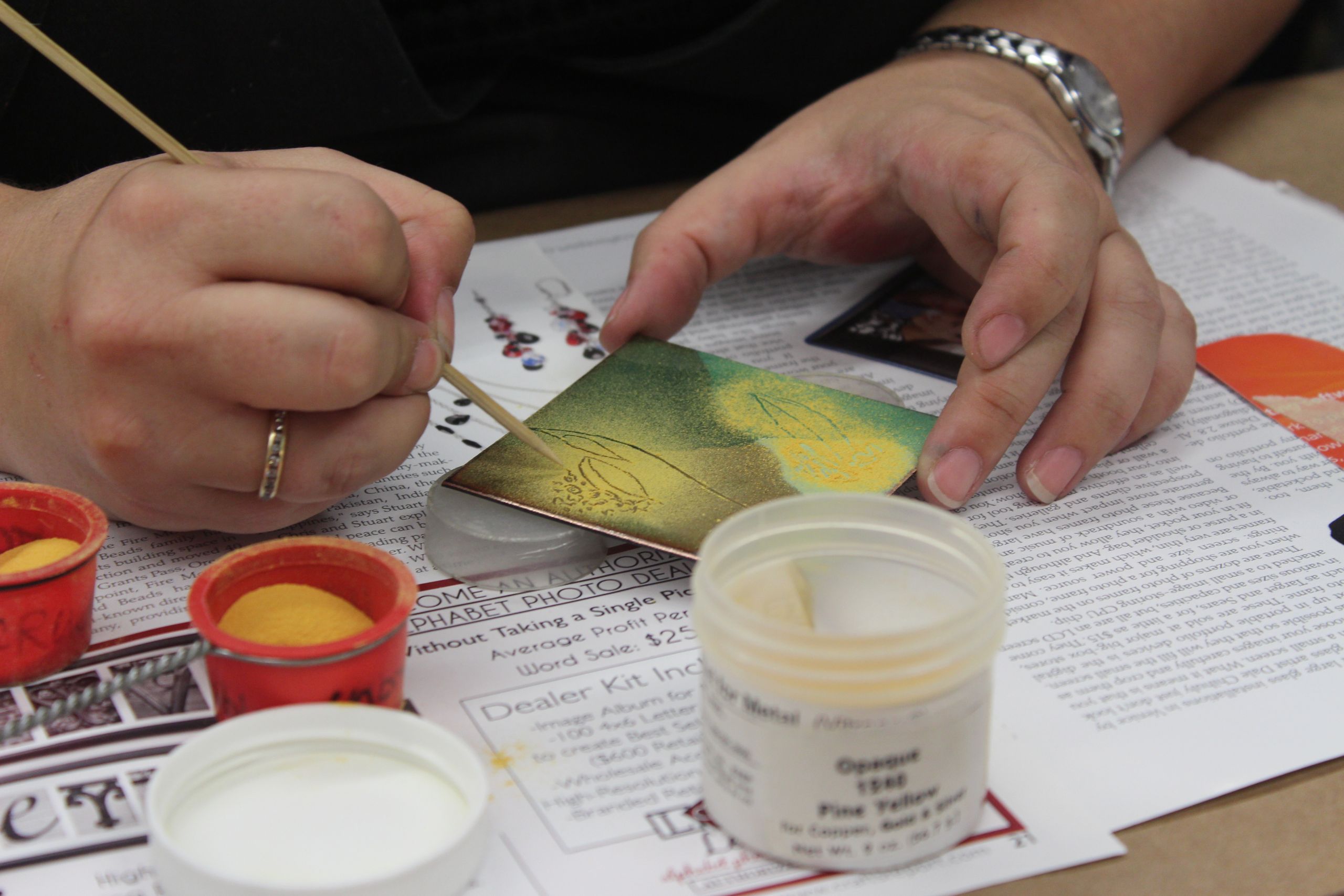
The process of vitreous enameling explained
Whether you are using jewelry enamels or porcelain enamels, the first step involves preparing the metal you will be using. Fabricate, shape, and clean the metal before you apply the enamel.
Enamels will fuse to metal between 1400 to 1600 degrees Fahrenheit using either a kiln or a torch if it is a smaller piece. The bigger the piece to be enameled, the larger the kiln will need to be.
Apply counter enamel
Counter enamel can be applied to the back of the piece of metal before enamels are added. Unlike other glazing techniques, enameling involves heating a piece fairly quickly and then exposing it to a cold environment immediately after firing. This rapid change in temperature can cause thermal shock, warping and cracking the enamel. Counter enamel prevents the effects of thermal shock.
Heat is applied
Before firing your piece in the kiln, place it on a trivet. Put on your safety glasses and heat resistant gloves. After the kiln reaches 1500 degrees Fahrenheit, insert your enameled piece, and set your timer. Enamels usually fire in just a few minutes, so make sure to stay close. You can remove your enameled piece from the kiln while it is still hot.
Enamel is applied to surface
If you are working with dry enamels, you can apply color by using a sifter to coat your metal. You may have to pick up and angle the metal workpiece so it is evenly coated. You may choose to work with different particle sizes, sift through stencils, or use various techniques to create visual effects. As you apply your enamel, make sure it does not pick up any contaminants, like dust or hair. The final layer should not be more than ⅛ inch thick. If it is any thicker, you run the risk of cracking your enamel.
Applying wet enamels is more labor intensive than working with dry enamels. It usually involves applying wet enamels to a previously fired enamel surface. These enamels are suspended in a water-based liquid, and can be applied by dipping, flow-coating, or spraying onto the surface of your work piece. It allows for thicker layers and makes it easy to layer enamels.
Enameling is the only glazing process that allows you to remove the piece from the kiln while it is still hot. When working with ceramics or glass, you must wait for the piece to anneal and slowly cool down to prevent thermal shock.
As the piece is fired, the enamels melt and flood the surface of the metals. As it cools, the enamels fuse to the metal surface. Let your piece cool to room temperature before handling it.
Repeat as necessary!
You can repeat this process as many times as you like, but be sure to work in order from hard fusing to soft fusing enamels. When layering enamels, you will need to apply the enamels in such a way that they don’t crack when fired. Start with hard fusing enamels that take the longest amount of time to fuse. Then, apply medium fusing enamels, all the way to the lowest temperature enamels.
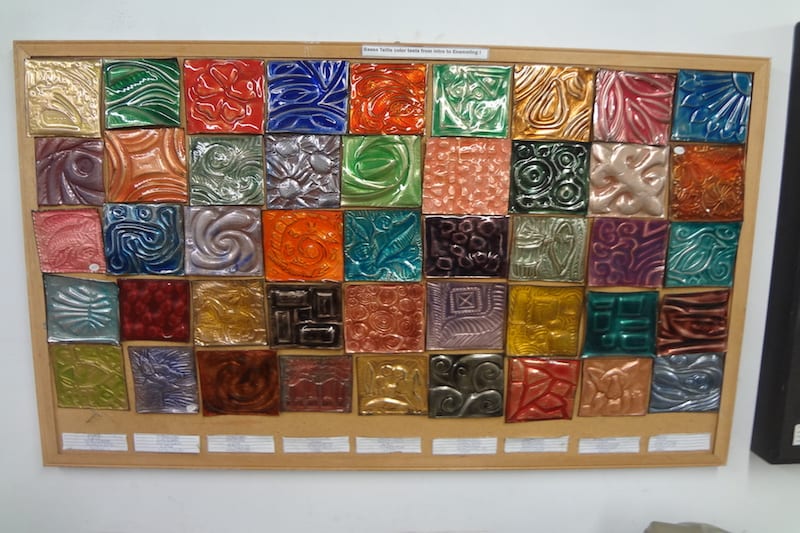
Learn vitreous enameling at The Crucible
In The Crucible’s Enameling Department, we teach both traditional and experimental application techniques to various metals. In our introductory enameling classes, students will learn about the properties of materials, tools, and equipment, as well as basic dry application techniques. More advanced classes teach a range of classical wet application techniques, many of which have French names, as well as contemporary experimental techniques. You can learn to make objects ranging from fine cloisonné jewelry to large-scale steel sculptures and wall pieces. Our well-equipped studio features everything you need to learn the basics of enameling, and then take it to the next level.
Vitreous enamel FAQs
What is vitreous enamel made of?
Vitreous enamel is made by smelting naturally occurring minerals, such as raw silica, feldspar, borax, soda ash, and sodium fluoride at high temperatures until all of the raw materials have melted. Different combinations of these materials will create unique characteristics, such as opacity, colorant, transparency, acid resistance, and more.
What’s the difference between vitreous enamel and regular enamel?
Vitreous enamel is simply regular enamel. All other uses of the word “enamel,” such as the enamel of your teeth or a powder coating on metal, have nothing to do with fusing glass to metal at high heat. Powder coating is not a vitreous enameling technique even though some heat may be used to cure paint.
Porcelain enamel became popular during the industrial revolution to prevent steel from rusting. To make porcelain enamel, the frit is combined in a container with kaolin clay to keep the particles in solution. Porcelain enamels can be applied wet using techniques like spraying, silkscreening, and more.
Can vitreous enamel be repaired?
The most common way to repair chips in vitreous jewelry enamel is by using epoxy. This method is more cosmetic and simply covers the repaired area with paint, which will never be as durable as the original enamel. Only specially trained enamelists are able to repair jewelry enamels. Industrial enamels are a bit easier to repair although industry, because it works by uniform standards, often discards damaged items rather than repair them.
How durable is vitreous enamel?
Jewelry enamels tend to be very fragile, but if they are protected from harsh handling, they can retain their vibrancy for centuries. Industrial enamels are incredibly durable and resistant against light, scratches, chemicals, and natural elements. A great example of the durability of vitreous enamels is outdoor signs, which are subject to rain, sunlight, and even fires, but maintain their color and integrity for years.
Is it safe to cook with vitreous enamel?
Yes, it is safe to cook with porcelain enameled cookware. It is easy to clean, hygienic, and long-lasting against intense temperatures. Jewelry enamels used in vessels and ornate utensils are not used for cooking.







